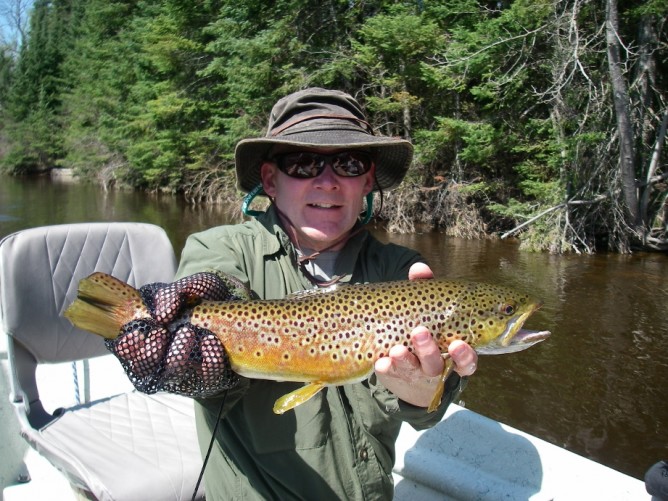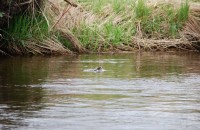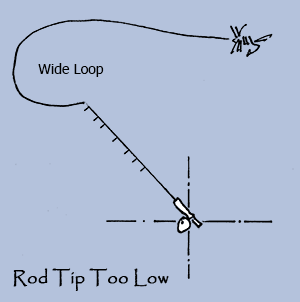For most trout anglers, catching fish on a dry fly is the highlight of the sport – it’s both visual and satisfying when it all comes together – pure deception. So when you come across a fish rising and feeding on the surface, it’s hard not to get excited. Just do some things right to increase your chances of catching that fish. Below are some tips for dry fly fishing.
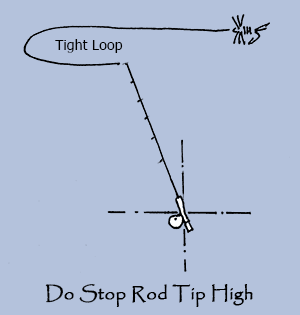 Stop the Rod Tip High
Stop the Rod Tip High
Getting your line, leader and ultimately your fly to straighten out at the distance you want is crucial – without doing so you risk your fly pilling up next to your coiled-up leader and line, often requiring corrective measures so you don’t spook the fish. That is if you haven’t already.
By stopping the rod tip high at the end of your forward casting stroke, you have helped ensure a tight, compact and efficient loop that will have enough energy to straighten out. Once the line has straightened, do follow it down to the water’s surface rather than lead it.
When you consistently stop the rod at the same height, the length of the cast is consistent, too. If you lower your rod tip some, your cast can be longer which not only might be off the mark, but into some unwanted bush, tree, log or other snag.
Not only is it important to stop your rod tip high, but to push that rod to an abrupt stop to get a powerful cast that straightens out and on target. After that line has straightened out, gravity will take the fly to the water, just follow the line and fly to the water as it drops.
Mend
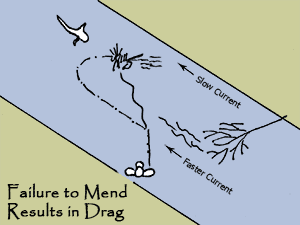 The majority of the time when fishing dry flies, a drag-free drift is paramount — the difference between catching fish and putting them down. The further we cast and the more water that our line is perpendicular to, the greater the chance that the current is going to push against it, putting a bow into the line, dragging the fly across the surface. This drag, often resembling a water skier cutting the wake, can put the most eager fish down and out without another chance of catching them. Avoid doing so by mending.
The majority of the time when fishing dry flies, a drag-free drift is paramount — the difference between catching fish and putting them down. The further we cast and the more water that our line is perpendicular to, the greater the chance that the current is going to push against it, putting a bow into the line, dragging the fly across the surface. This drag, often resembling a water skier cutting the wake, can put the most eager fish down and out without another chance of catching them. Avoid doing so by mending.
Mending fly line is the proactive placement of slack to compensate for faster or slower currents than the speed of the current the fly is in. Mending line isn’t enough – it has to be done correctly. If you simply flip your rod to the side, the fly will often skitter or drag on the water – the exact thing you are trying to avoid.
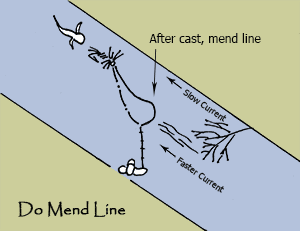
I encourage anglers to have some extra “mending line” pulled off the reel and placed in the hand not holding onto the rod. After the cast, and with the line lying in the upward facing hand, draw a circle with the rod tip, accelerating through the motion where you want the extra line to go. The acceleration should take the mending line and apply it to the water – without the extra line, the motion will take line from the path of least resistance – the dry fly – and drag it across the water. The larger the circle, the larger the mend and the more “mending line” required.
Line Management
Anglers often see a rising fish and start pulling line off the reel as they are casting to it. While it might work sometimes, there is a good chance something will go wrong by casting too long, not long enough, not having line for mending, or putting out too much extra line, which can get in the way or caught on something once the fish is hooked.
In a typical dry fly feeding scenario, flies repetitively drift downstream to where a fish has chosen to hold and eat, giving us a moment time to plan the approach. Think like a sniper.
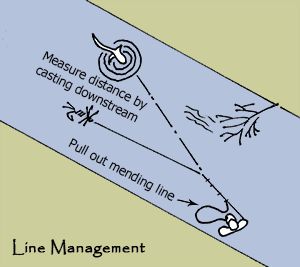 Try this: draw an imaginary line from where you are standing to where the fish is rising. Now, move that imaginary line and its length downstream, inside and nowhere near the fish. Pull off enough line and cast your fly to that distance which will give you the correct distance to the fish when you cast to it.
Try this: draw an imaginary line from where you are standing to where the fish is rising. Now, move that imaginary line and its length downstream, inside and nowhere near the fish. Pull off enough line and cast your fly to that distance which will give you the correct distance to the fish when you cast to it.
Next, pinch the line which will keep the correct distance of line out as you pull the extra line off your reel required for your “mending line”. Now, pick your fly up off the water and cast it just upstream of the fish and mend the extra line proactively. If the fish doesn’t eat the fly, make sure the fly, leader and line have drifted away from the fish before stripping in your “mending line,” then pick up the line and fly and cast again.
If you already have more line off the reel that you know you aren’t going to use, reel it up to avoid getting it caught on something.
By applying these three “Do’s” to your dry fly fishing, you avoid a lot of the common mistakes I witness and significantly improve your chances at hooking that rising fish. Remember, there are other variables that can make the difference, including the fly pattern and tippet size – but without a good presentation those things won’t matter.

